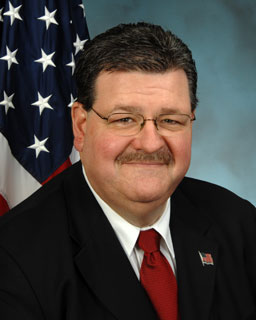
Step Inside Ginnie Mae: The Ginnie Mae Model and New Housing Finance Trends

Ginnie Mae has made the news frequently this year. A lot has changed, but several things remain clear:
►Ginnie Mae’s model has succeeded in the face of the worst housing market in our lifetime.
►Participants in the mortgage lending and servicing landscape are changing drastically.
►The shift in the types of entities now servicing mortgages emphasizes the important differences between Ginnie Mae and the government-sponsored enterprises (GSEs).
Why are these differences so important? Because, in short, Ginnie Mae does not buy loans from originators, nor are we responsible for servicing them. Ginnie Mae does not securitize mortgage-backed securities … we guarantee the timely payment of principal and interest to bondholders. Further, Ginnie Mae spreads the credit risk among its more than 400 Issuers, none of which is too-big-to-fail. If not for the flexibility of Ginnie Mae’s single security platform, non-depository institutions would not have been able to step into the void left by the retreat of large banks.
But these new institutions did step in, and now they fill a vital role in today’s housing finance market, providing credit access to borrowers who might otherwise have been shut out. As of May 2015, 64 percent of Ginnie Mae’s new issuance was from non-banks–up from about 18 percent in 2010. While their financing structures are complicated, these new players in the Ginnie Mae program are generally financially sound. They present a variety of challenges that Ginnie Mae must navigate in order to protect the government guarantee. With the increase of these non-banks, we must effectively manage our risk by monitoring these new institutions closely to ensure they have the necessary liquidity to meet monthly principal and interest payments to bondholders.
These entities fund their operations in ways that are more complex and not as well-tested as traditional banking operations. Those differences, in turn, could affect how they perform under stress, calling into play Ginnie Mae’s responsibility to monitor and evaluate. And because we expect non-bank lenders to account for such a large portion of our business this year, we will need to make significant investments to support this trend.
However, given that we are a government agency operating within the environment of spending constraints, this can be a challenging situation. But, it is an important challenge as we lay the groundwork to permit private capital to more efficiently step in to support mortgage servicing and financing.
It is important to remember that Ginnie Mae is placing private capital well in front of taxpayer risk. It is preserving access to safe and simple loan products such as the 30-year, fixed-rate mortgage (FRM). It is enabling lenders to borrow from global capital markets at low costs, so affordable credit is available far and wide. And it keeps smaller lenders competitive against the nation’s largest banks because investors are indifferent to the size and financial strength of its Issuers. All investors care about is the full faith and credit of the U.S. government that stands behind Ginnie Mae’s guaranteed mortgage-backed securities (MBS).

Ted W. Tozer is was sworn in as president of Ginnie Mae on Feb. 24, 2010, bringing with him more than 30 years of experience in the mortgage, banking and securities industries. As president of Ginnie Mae, Tozer actively manages Ginnie Mae's $1.5 trillion portfolio of mortgage-backed securities (MBS) and more than $460 billion in annual issuance.
This article originally appeared in the June 2015 print edition of National Mortgage Professional Magazine.




